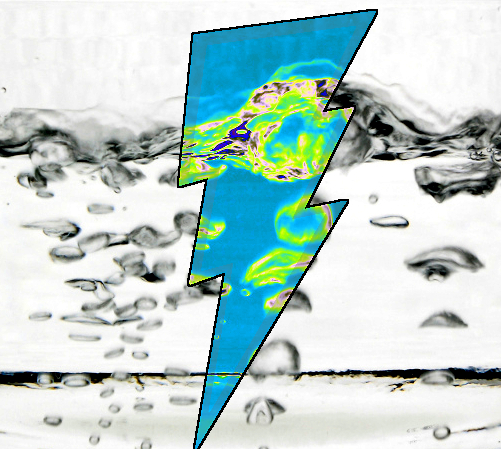New tech for water splits
 The rise of hydrogen as an important future renewable energy source is accelerating – and South Australian researchers have taken a step forwards in understanding the stability of photocatalysts for water splitting to improve potential production methods.
The rise of hydrogen as an important future renewable energy source is accelerating – and South Australian researchers have taken a step forwards in understanding the stability of photocatalysts for water splitting to improve potential production methods.
New research by Flinders University, University of Adelaide and Tokyo University of Science has shown chromium oxide to be the best and most efficient material in the structural and electronic properties of photocatalyst semiconductors.
Hydrogen produced from renewable energy sources can be used as fuels that do not contribute to CO2 emissions, and the recent SA government announcement to open the world’s largest Hydrogen Power Plant near Whyalla, as part of an expansive Hydrogen Jobs Plan, will take the state closer to its zero carbon emission targets.
“It’s an exciting time to be involved in hydrogen science, and there are rapid advances being made to ensure the greatest possible efficiency of hydrogen production,” says Flinders Professor of Chemical Physics Gunther Andersson, first author in a new article outlining the method in an American Chemical Society (ACS) journal.
Photocatalytic water splitting is a promising technique to split water into hydrogen and oxygen using semiconductor particles as photocatalysts.
While researchers understand that the structural and electronic properties of photocatalyst semiconductors play a major role in determining photocatalytic activity, their goal is to find the best and most efficient material to assist this process – which they have found to be chromium oxide.
“Cocatalysts can promote efficient photocatalytic water splitting by supporting the electron and hold separation and acts as active sites for the water splitting reaction,” says Professor Andersson, Deputy Director of the Flinders University Institute for NanoScale Science and Technology at the College of Science and Engineering.
“However, the cocatalyst requires a protective overlayer to suppress the H2 and O2 recombination which will result in a backward reaction that takes H2 and O2 back to H2O.
“We need to find the right overlayer material to ensure the most efficient photocatalytic water splitting – and this led us to explore mixed transition metal oxides.”
The researchers found that chromium oxide overlayers protect the water splitting process in photocatalysis for solar light driven hydrogen production.
Their work investigated the stability, oxidation state, and the bulk and surface electronic structure of chromium-oxide photodeposited onto different particles as a function of the annealing process.
Importantly, the international research team also found that the chromium oxide overlayers do not contribute to the water splitting reaction.
Senior co-author University of Adelaide Professor of Chemistry Gregory Metha adds: “World-leading photocatalysts have chromium oxide overlayers and this work reveals new insights into the nature of the coating that could lead to improvements in future materials”.
It is known that chromium oxide overlayers protect the water splitting process in photocatalysis for solar light driven hydrogen production.
The researchers found that the thermal stability of the chromium oxide overlayer depends on the chemical nature of the underlying photocatalyst.
“Understanding the stability, oxidation state, and electronic structure of the chromium-oxide layer on photocatalyst particles under annealing is essential for overlayer applications in photocatalytic water splitting,” says Professor Andersson.







 Print
Print